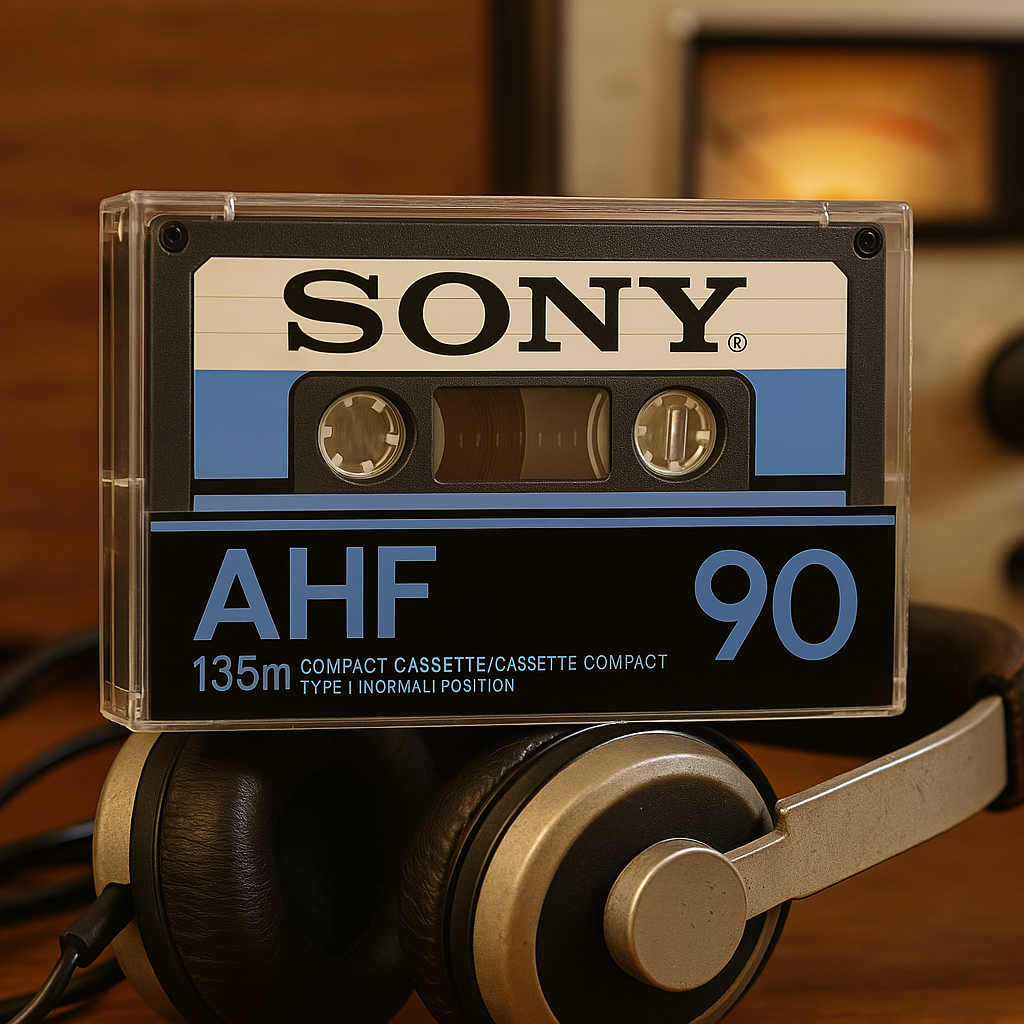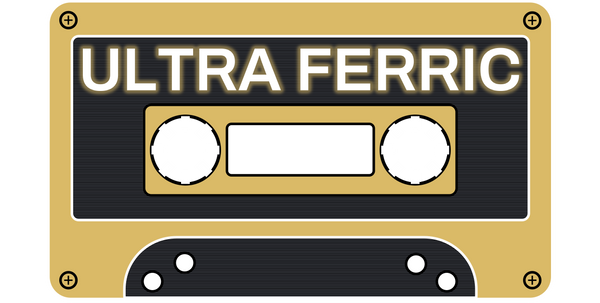
Sony AHF Cassette Tape Review: A Ferric Legend That Still Delivers
Share
Sony AHF Cassette Tape Review - Is This the Best Vintage Type I Ferric Tape?
Guest post by our customer, Sean V.
The Sony AHF cassette tape (1978–1981) is considered one of the best-performing vintage Type I ferric tapes ever made. Known for its strong bass response, minimal hiss, and durable magnetic formula, it continues to deliver professional-quality recordings even after 40 years.
What Makes the Sony AHF Cassette Tape Special?
Here we have the Sony AHF cassette tape, manufactured between 1978 and 1981, a beautiful, classic-looking blank audio cassette that holds more than just nostalgic value. With its clean design and advanced magnetic tape formula (especially for its time), this Type I super ferric cassette was Sony's top-of-the-line offering before the famous HF-ES and HF-Pro came along.
In fact, if you trace the evolution of Sony's cassette tape lineup from the mid to late 1980s, you’ll notice a recurring theme: color cues. The AHF’s color scheme- blue, black, and silver- set the tone for Sony’s later high-end releases. This was a golden era for magnetic tape, with the introduction of Type IV Metal tapes, Type III FeCr, and improved Type II and Type I formulations across the board.
How Is the Sony AHF Built?
The J-card is high quality, with vibrant ink on thick cardstock. The pre-applied side labels are perfectly intact, with no peeling at all. Spinning the hubs reveals the rust-red oxide tape expected from this era, and impressively, it still maintains a glossy finish, showing no signs of lubrication loss.

How Does the Sony AHF Perform in Audio Tests?
All tests were done on an Aiwa F-770 cassette deck, using Aiwa’s proprietary Auto-DATA technology to automatically equalize, calibrate, and bias the tape. My recording setup includes a high-resolution DAC and a 32-channel Soundcraft Delta Console, offering professional-grade control over input levels and tonal response.
Frequency Response Results
-
60Hz (sub-bass): Minimal distortion until +2dB.
Very respectable performance for a 40+ year old tape. -
400Hz (midrange): Smooth up to 0dB; even at +2dB, the tone holds.
Slight changes occur above +3dB, but only noticeable on critical headphones like the Audeze LCD-X. -
1kHz: Historically a tough frequency for ferric tapes, but the AHF held strong.
Slight noise at 0dB, but overall excellent. -
10kHz (high frequency): Surprisingly clear.
The tape recorded cleanly up to +1 to +2dB with no obvious hiss.
The results matched the frequency response curve on the original Sony AHF packaging, which speaks volumes about its lasting quality.
How Well Does It Record Real Music?
For real-world performance, I recorded some modern Romanian Microhouse music onto the AHF:
- El Perro De La Noche - Perro 09
- Swoy + Silat Beksi - Starburst EP
These tracks were ideal for testing because they include shimmering highs, deep bass, and intricate stereo imaging. The AHF handled them all beautifully.
At +4 to +6dB, the bass was smooth and present, with no tape hiss audible on speakers. Congas, hi-hats, synth drums, and reverb tails were all captured with impressive clarity. Even the most subtle details across the stereo field were preserved, a rare feat for vintage ferric tapes.
Is the Sony AHF Good for Bass and High Frequencies?
The B-side featured Detroit-style dub techno with 808 subs and sharp 909 hats. I started at +4dB and pushed to +6dB without distortion. The bass response was tight and impactful. My subwoofer even rattled the walls—something you don't expect from a cassette recording!
This tape really showed its strength. The punch of the kick drum was “in your chest” but recorded tight. Bass notes were clearly heard, with no muddiness. Synth pads gleamed, reverb decays were lush, and no detail was lost.
Final Verdict: Is the Sony AHF Worth Using Today?
The Sony AHF is a stellar performer. From sub-bass to shimmering highs, it delivers clarity, punch, and warmth that rivals many Type II tapes. Considering its age, it's astonishing how well this tape has held up—Sony was truly ahead of the curve.
If you're into vintage cassette tapes, especially high-performance Type I ferric tapes, the AHF is a must-have. With proper calibration and possibly some noise reduction, the AHF could easily pass for a much newer tape in sound quality.
Rating: 5/5
Special thanks to Ultra Ferric for sending over this rare gem for review. If you can get your hands on some Sony AHF tapes, grab them now—they won’t be around forever.
Frequently Asked Questions
Q: What type of cassette is the Sony AHF?
A: The Sony AHF is a Type I (Normal Bias) super ferric cassette tape known for high performance and durability.
Q: When was the Sony AHF cassette tape made?
A: Sony AHF tapes were manufactured between 1978 -1981, and 1982-1984.
Q: Is the Sony AHF tape good for recording music?
A: Yes, especially for electronic, house, and techno music. It delivers smooth bass, detailed highs, and low noise.
Q: Can the Sony AHF compete with Type II tapes?
A: In many ways, yes. While it's a Type I tape, it outperforms many mid-range Type II tapes from the same era.
